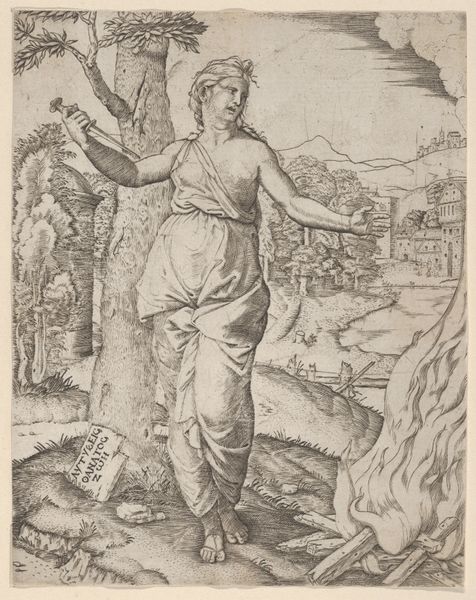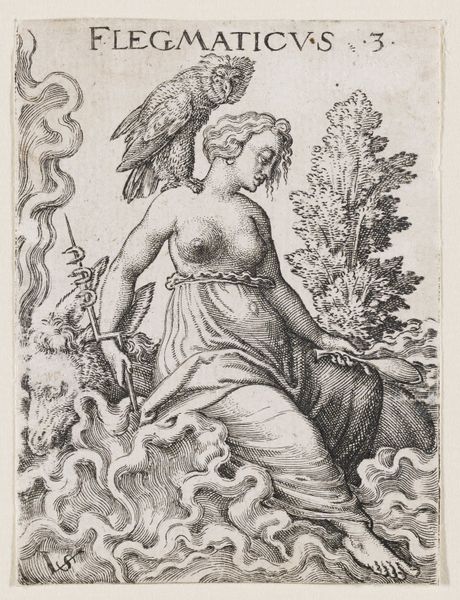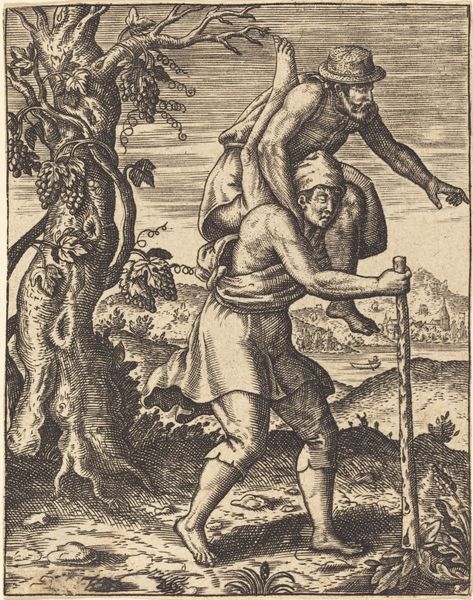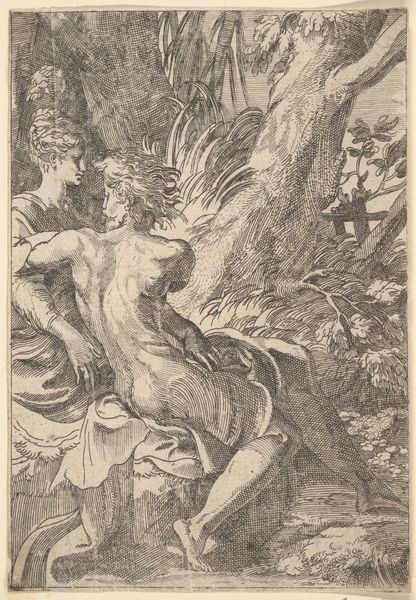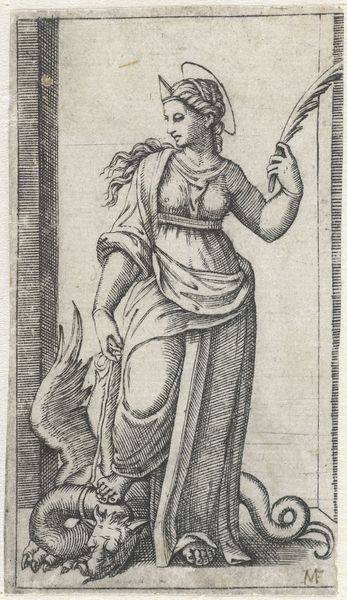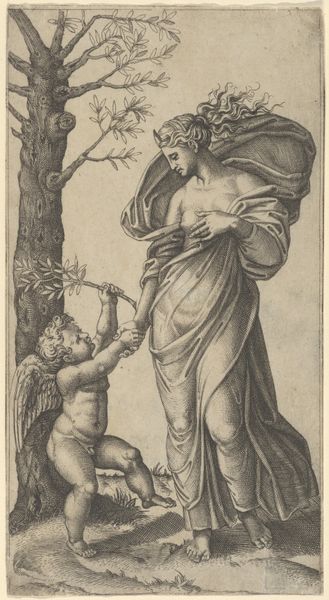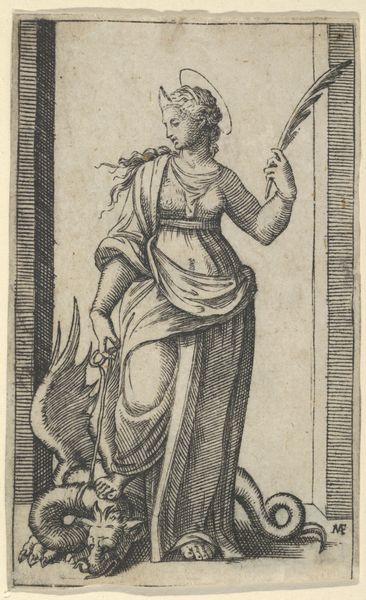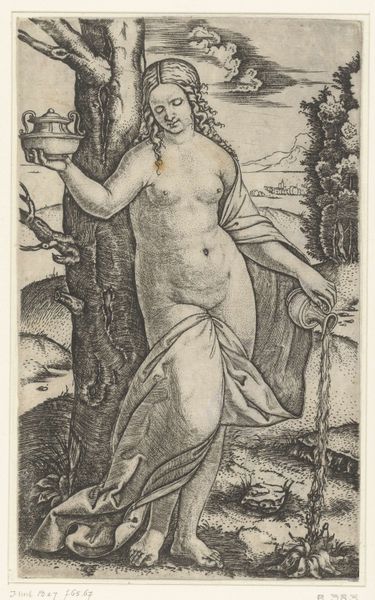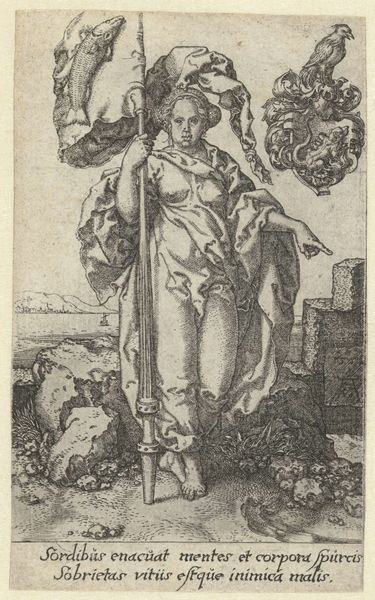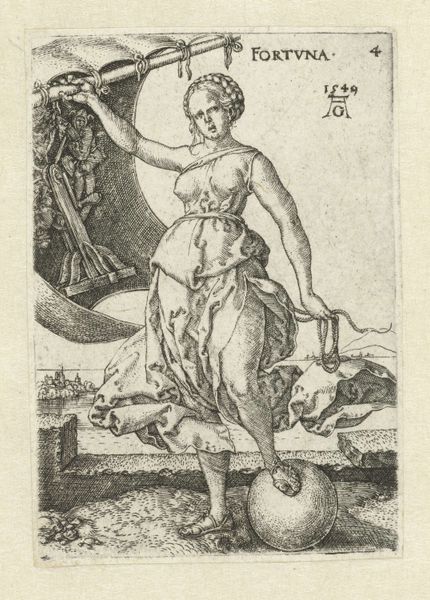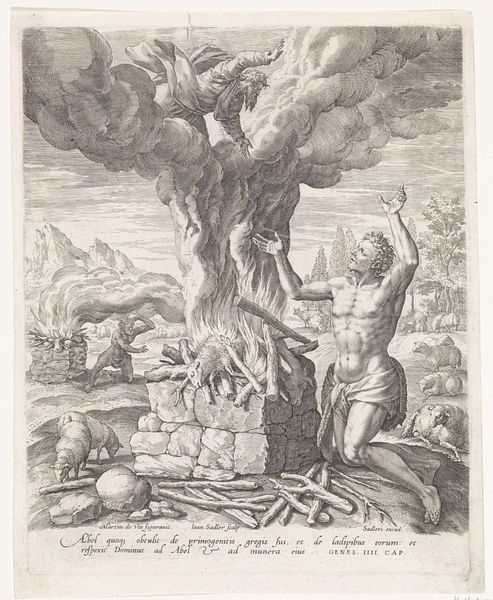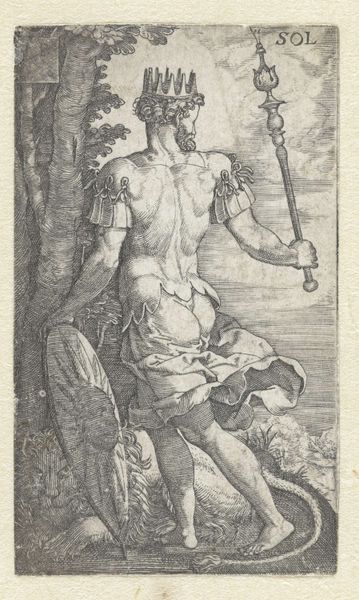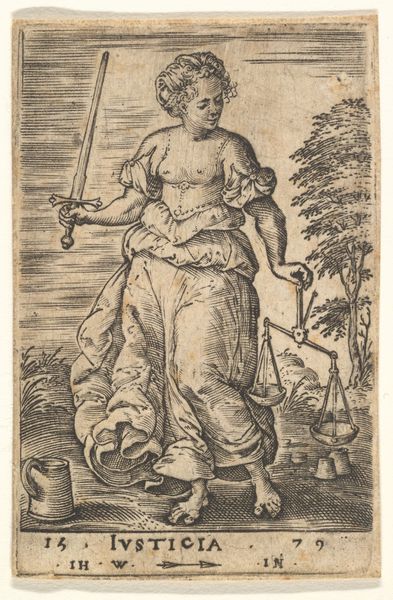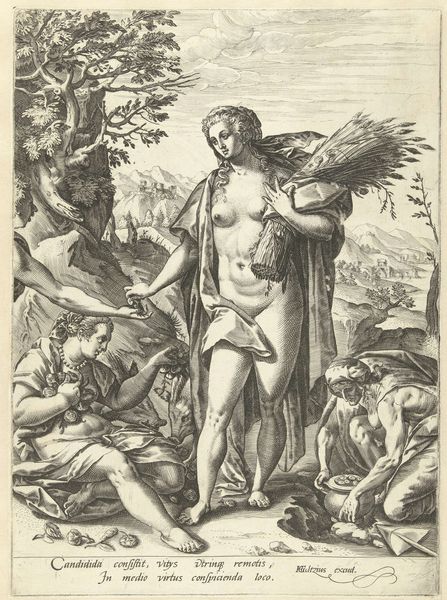
print, engraving
# print
#
landscape
#
figuration
#
11_renaissance
#
history-painting
#
italian-renaissance
#
nude
#
engraving
Dimensions: height 159 mm, width 125 mm
Copyright: Rijks Museum: Open Domain
Curator: This engraving by Marcantonio Raimondi, created between 1508 and 1512, depicts "Dido Killing Herself with a Dagger Next to a Funeral Pyre." It’s a striking representation of a tragic figure from classical literature, currently held in the Rijksmuseum collection. Editor: It certainly is intense. The flames from the pyre leap towards us, contrasting with Dido’s rather calm demeanor. I am particularly interested in the bare landscape; it almost softens what we understand to be the ultimate demise of the main figure. Curator: I agree; there's a compelling juxtaposition here. Raimondi's choice to portray Dido with such apparent composure, poised rather than frantic, allows us to delve into the patriarchal structures in which this tragedy plays out. As a Queen, her suicide isn't just personal; it is a political act, a reclaiming of agency in a world determined to use and discard her. Editor: And isn't that interesting when you consider the audience? Prints like these were meant for a more democratized patronage and reflect humanist thought popular in the Italian Renaissance courts, when depictions of antiquity provided templates of leadership or more broadly, civic culture. This would suggest her end can be a caution or guide for leading viewers to contemplate similar struggles, where Dido is framed by Virgil in the *Aeneid*. Curator: Precisely. Dido's narrative has consistently been appropriated, reshaped, and instrumentalized to perpetuate diverse cultural narratives. By drawing inspiration from her and figures from classical literature, we have a medium that's grappling with ideas of gender, power, and resistance, asking audiences, then and now, to question who benefits from the story we consume. What are the historical implications embedded in depictions of powerful women destroyed by men? Editor: In a manner that transcends epochs, it prompts reflection on the political deployment of imagery—then and now— to fortify ideological narratives and to engage audiences who were, in many cases, very literate about what was visually unfolding. We’re left to question how a seemingly aesthetic choice – a delicate engraving depicting a tragic queen – might reflect power dynamics that permeate history itself. Curator: Absolutely, and perhaps invite consideration about our role in their ongoing reverberations. Editor: Yes. It gives pause, doesn’t it?
Comments
No comments
Be the first to comment and join the conversation on the ultimate creative platform.
